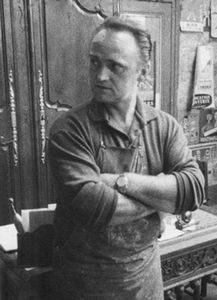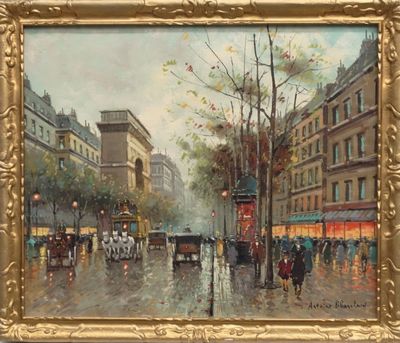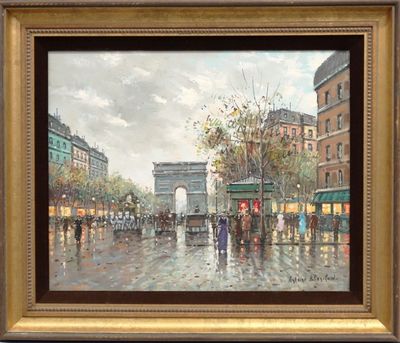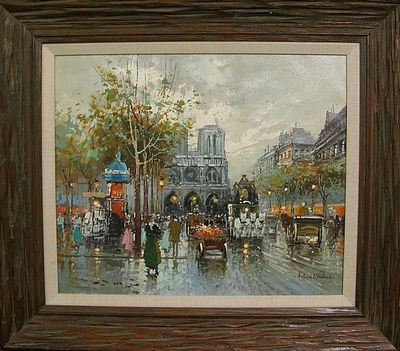Antoine Blanchard Biography

Antoine Blanchard
| Born | 1915 - 1988 |
| Birthplace | France |
| Style |
Antoine Blanchard (1915-1988), was born in a small village near the banks of the Loire. He was the eldest of three children and his father, a carver, managed a small carpentry and furniture shop.
Antoine would watch his father hand carve the furniture and began to display an artistic flair early in life, which prompted his parents to arrange drawing lessons. He continued his training in Rennes at the Ecole des Beaux-Arts where he studied sculpture and drawing. Upon graduation, he received the school’s highest award: Le Prix du Ministre.
By 1932 he left Rennes and traveled to Paris, where he developed a love for the city and its street life.
When WWII broke out In 1939 Blanchard was called up for service, and was unable to return to his art until years later. Once able to pursue his dreams, he began to research the Belle Époque period in Paris.
Many of the subjects and scenes he eventually portrayed were taken from images he collected of Paris during the 1890's, and he would often work on paintings for days or months before he finally felt they were complete, and signed them Antoine Blanchard.
In his book, Antoine Blanchard, His Life His Work, the author writes“ . . . that Blanchard spent so much time perfecting his work . . . his body of work was rather limited, unlike the hurried and proliferations of some modern artists.”
Author Larde writes that Blanchard’s works “are first of all, a marvelous invitation to an ideal walk through old Paris, so different from that of today.”
Like his contemporary, Édouard Cortès, Blanchaard devoted his artistic career to the depiction of Paris through all its daily and seasonal changes. But he was not an imitator of Cortès, but depicted the life of Paris at the turn of the century from with his own, unique style.
Larde makes an interesting comparison:
“Édouard Cortès expressed himself in a rich, virile style, using large and stressed
touches, revealing a strength, which recalls the great masters of the 18th century.
“Blanchard used small strokes, with a delicate, enveloping and mellow treatment; the slight haziness which is a characteristic of his work in many ways recalls the great masters of the impressionist period.”
Whether it was l’Arc de Triomphe, la Madeleine, Café de la Paix, Notre Dame or other historical monuments and buildings of Paris, his focus was on the daily life of Paris at the turn of the century. His art has become highly collectible and continues to grow in value.



